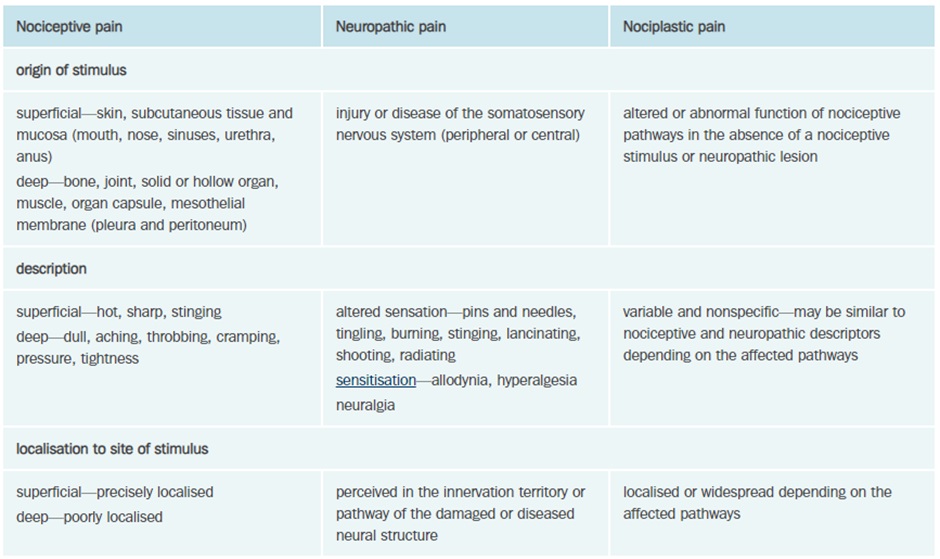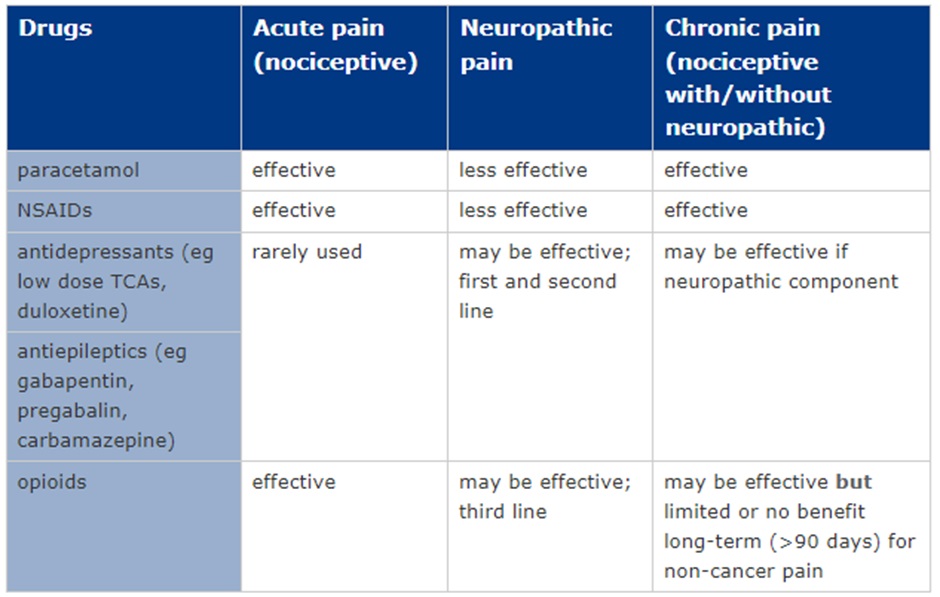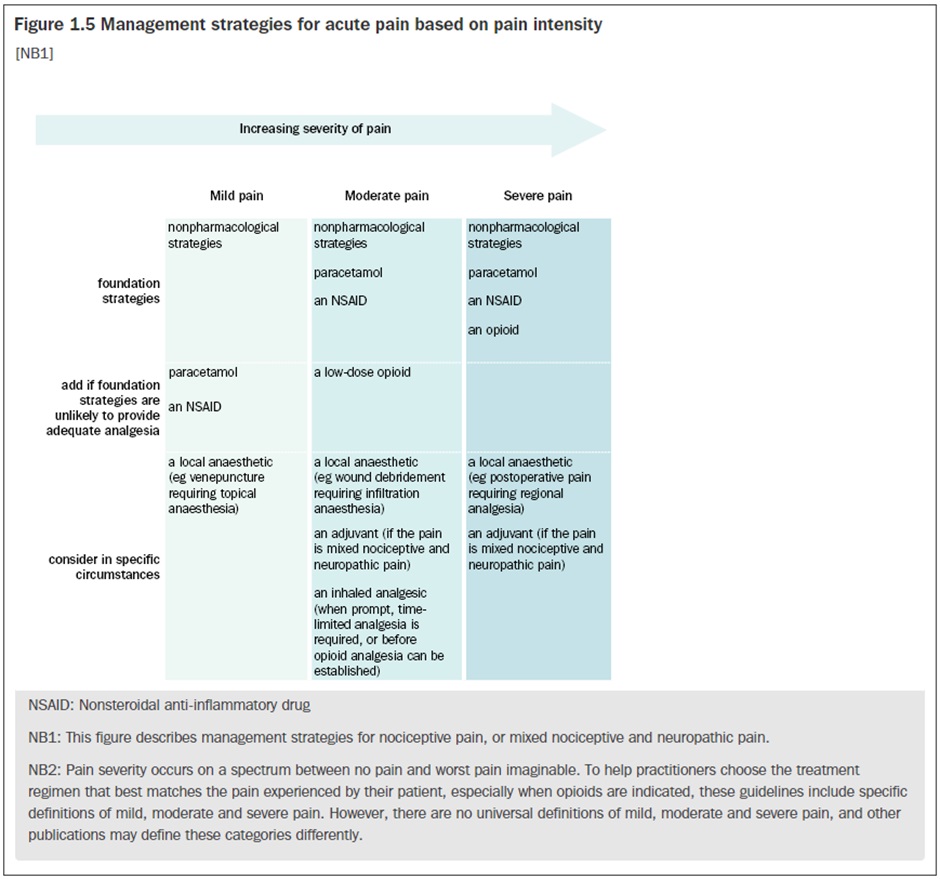10.7 Types of Pain and Clinical Application
Types of Pain
The treatment of pain differs by the type and classifications of pain.
Nociceptive pain is pain that develops in response to a noxious stimulus such as injury, inflammation, or disease.
Neuropathic pain is pain that develops due to damage or disease of the nervous system. This damage can be in the peripheral (eg diabetic neuropathy) or central (eg spinal cord injury) or both (eg postherpetic neuralgia).
The patient’s description of pain can help determine the likely type of pain. Nociceptive pain might be described as sharp or dull while neuropathic might be described as pins and needles or shooting.
Nociplastic pain is complex and will not be specifically discussed in this module but it is an important clinical consideration, especially in chronic pain sufferers.

Pain can also be classified based on the duration of pain. Acute pain is pain that lasts less than 3 months and usually has a nociceptive component. Chronic pain is pain that lasts more than 3 months. In many cases, chronic pain persists after the resolution of the injury/pathology that triggered the pain and is related to central sensitisation.
The choice of pharmacotherapy is influenced by the type and duration of pain.

Acute Pain
Pharmacological treatment of acute pain is used when non-pharmacological approaches are ineffective or unlikely to produce sufficient pain relief. The choice of therapy is influenced by the severity and type of pain.
A combination of different analgesics are commonly used to provide synergistic effects and to limit the amount of opioid required (opioid sparing).

Effective and timely use of analgesia in acute pain may help to reduce (not eliminate) the risk of chronic pain developing by limiting central sensitisation and also assisting with appropriate utilisation of non-pharmacological therapies (eg physiotherapy).
Chronic Non-Cancer Pain
In contrast to acute pain, analgesics should not be used as the primary management strategy for chronic noncancer pain because they are unlikely to eliminate pain and adverse effects often outweigh benefit, especially in the long term.
A multidimensional approach to chronic pain management simultaneously addresses all sociopsychobiomedical factors affecting the patient’s pain, and helps patients achieve their goals sooner compared to approaches that address only some contributors to the patient’s pain.
Paracetamol and NSAIDs have limited evidence in chronic non-cancer pain but are generally relatively safe. High quality evidence shows that opioids are of little, if any, benefit and in many cases are less effective than non-opioid pain relief for chronic pain (while being associated with significant risk of harm).
Neuropathic Pain and ‘Adjuvants’
When neuropathic pain is suspected, ‘adjuvant’ therapies such as gabapentinoids, TCAs and SNRIs have been shown to provide benefit in some patients (NNT ~ 7 ie 1 in 7 patients benefit in RCTs). Gabapentinoids produce more rapid pain relief however may not be appropriate for use in patients at risk of abuse.
When neuropathic pain is localised to a specific region, use of topical therapy (eg a lidocaine patch) may produce analgesia while avoiding systemic side effects associated with systemic therapies.
Cancer Pain
Paracetamol and NSAIDs remain first line because they are effective and help to reduce opioid requirement. Cancer pain generally has a significant nociceptive component and responds well to opioid therapy. Opioids have been demonstrated to produce improvements in quality of life and in contrast to non-cancer pain they are often prescribed long term in patients with cancer associated pain. Adjuvants may be beneficial when there is a neuropathic component to the patient’s pain.
🎥 Watch this video
COMMONWEALTH OF AUSTRALIA Copyright Regulations 1969 WARNING This material has been reproduced and communicated to you by or on behalf of James Cook University in accordance with section 113P of the Copyright Act 1969 (Act).
The material in this communication may be subject to copyright under the Act. Any further reproduction or communication of this material by you may be the subject of copyright protection under the Act. Do not remove this notice.
